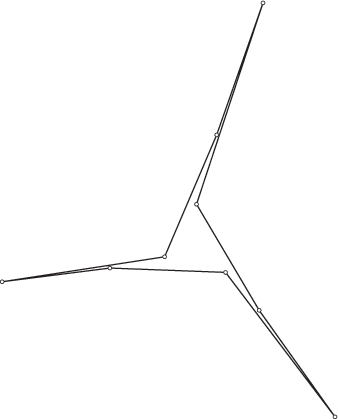How many \pi-floodlights are always sufficient to illuminate any polygon of n vertices, with at most one floodlight placed at each vertex? An \alpha-floodlight is a light of aperture \alpha. (We consider here “inward-facing” floodlights, whose defining halfspace lies inside the polygon, locally in the neighborhood of the vertex. Other models of the problem allow general orientations of floodlights or restricted orientations (e.g., “edge-aligned”).)
Jorge Urrutia, perhaps first published in [Urr00].
Open. Now known that the fraction of n that always suffices lies between 5/8 and 2/3.
It was established in [ECOUX95] that for any \alpha < \pi, there is a polygon that cannot be illuminated with an \alpha-floodlight at each vertex. When \alpha=\pi, n-2 lights (trivially) suffice. So it is of interest (as noted in [Urr00]) to learn whether a fraction of n lights suffice for \pi-floodlights. A (very) special case is that \lceil n/2 \rceil-1 is a tight bound for “monotone mountains” [O'R97]. Tóth established [Tót01a] that (roughly) (3/4)n suffice, in the case of general orientation floodlights (not necessarily inward-facing). A lower bound of Santos, that \lfloor 3(n-1)/5\rfloor inward-facing floodlights are necessary (or \lfloor 2(n-2)/5\rfloor generally oriented floodlights), stood for several years, but just recently (Jan. 2002) Urrutia constructed examples, based on stitching together copies of Fig. 1, that show that 5(k+1)/(8k+9) (inward-facing) floodlights are necessary for each k, thus improving the lower bound factor from 0.6 to 0.625. Also, Speckmann and Tóth [ST01b] showed that \lfloor n/2\rfloor vertex \pi-floodlights suffice for general orientations, while \lfloor (2n-c)/3\rfloor suffice for inward-facing, edge-aligned orientations, where c is the number of convex vertices. In particular, this reduced the upper-bound fraction below 1.

art galleries; visibility
J. Mitchell, 24 Jan 2001; J. O’Rourke, 2 Aug. 2001; 29 Aug. 2001; 23 Jan. 2002; 30 Sep. 2007.